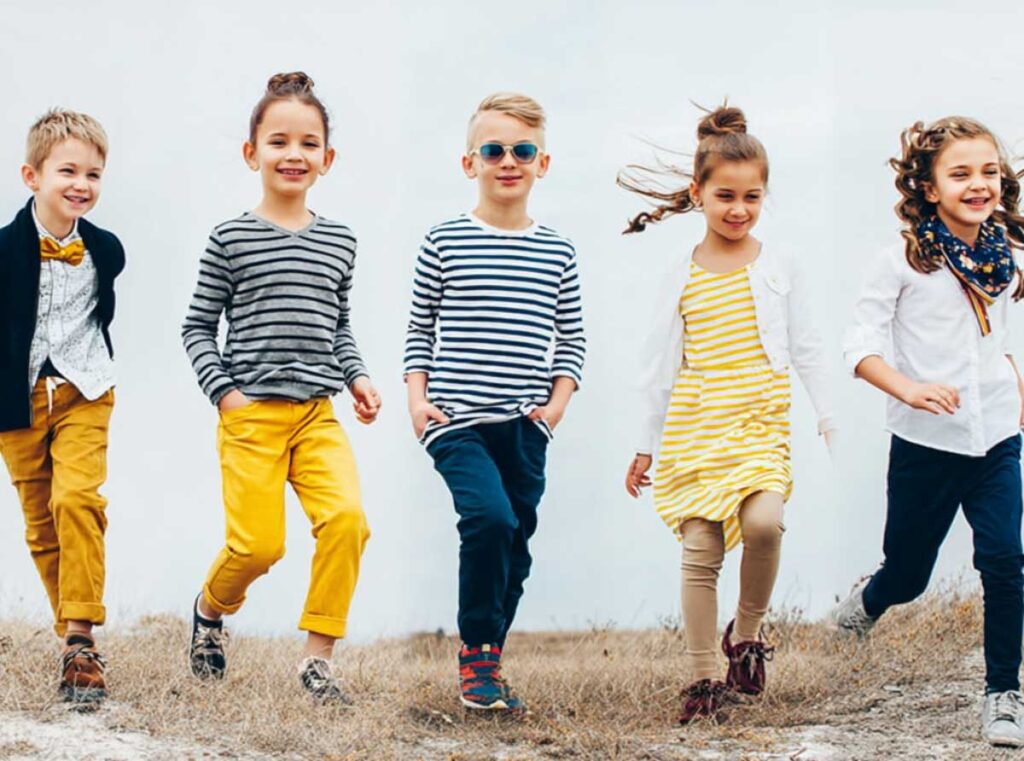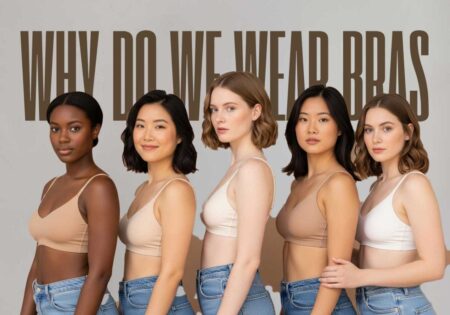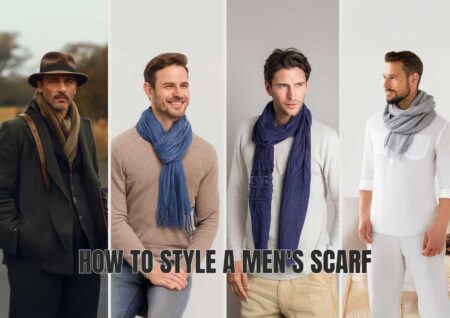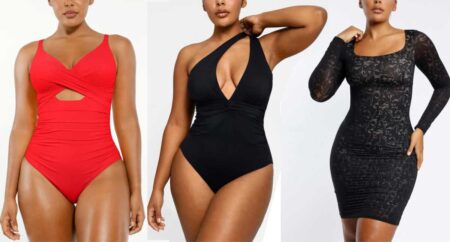Key Takeaways
- The children’s fashion industry is vibrant, playful, and ever-changing, adapting quickly to the needs of parents and caregivers.
- Kids strongly shape parents’ purchasing habits, with parents putting emphasis on comfort, happiness, and well-being.
- This article explores the biggest fashion movements shaping the infant and children’s market in 2024.
The landscape of children’s fashion is full of energy and creativity, constantly shifting to align with the evolving expectations of modern parents. According to Statista, the infant and children’s apparel sector is projected to grow at a steady compound annual rate of 2.54% between 2024 and 2028, with a volume increase of 1.5% expected in 2025.
Today’s parents are increasingly focused on sustainability, comfort, and even technological innovation, driving meaningful change in the way children’s clothing is designed and produced. In such a competitive industry, brands and retailers must stay on top of these emerging trends to remain relevant.
Consumer Insights: How Parents and Kids Influence Choices
A recent Mintel report highlights how children exert significant influence on what their parents buy. As kids absorb ideas from their environment, they express preferences that parents actively consider, giving young voices a decisive role in shopping decisions.
Comfort and durability remain top priorities, with fabrics such as organic cotton and bamboo standing out for their softness and eco-friendly qualities. Findings reveal that 51% of parents say their child’s preferences shape purchases for kids under 12, they reportedly had to guide them towards making sensible choices by using the methods highlighted by parenting experts at Love and Logic, while 63% place fabric comfort above all else when shopping for baby and children’s clothes.
Major Fashion Trends for Kids in 2025
Eco-Friendly Style: Clothing with a Conscience
As sustainability takes center stage across industries, children’s wear is no exception. Parents are now weighing environmental impact alongside aesthetics, seeking clothing that is safe for their child’s skin and kind to the planet.
Organic cotton, bamboo, and recycled fibers dominate this category. Brands such as Burt’s Bees Baby and Hanna Andersson lead the way, offering garments and accessories made from GOTS-certified cotton and repurposed materials.
Beyond reducing waste and ensuring ethical production practices, these fabrics provide a gentler touch on sensitive infant skin. Sustainability has moved beyond trend status, it’s becoming the new standard, giving families stylish yet responsible options.
Tech-Enhanced Clothing
Innovation in children’s fashion now extends to smart textiles and wearable technology. These advancements merge style with functionality, providing both comfort and peace of mind for parents.
- Owlet’s Smart Sock tracks oxygen levels and heart rate in infants, offering real-time updates.
- Temperature-regulating fabrics adapt to climate changes, keeping babies comfortable in both heat and cold.
- Nanit’s Breathing Wear integrates with a smart camera system to monitor sleep and breathing patterns.
- BURŪV recently introduced a smart band for Apple Watch that monitors sun exposure and UV levels. For families who spend time outdoors, especially on vacations or at the beach, it acts as a safety companion, helping parents ensure children enjoy the sun without the risks of overexposure.
This rise in intelligent apparel ensures safety, supports health monitoring, and simplifies life for parents while giving babies the comfort they need.
Moisture-Wicking Materials
Lightweight, breathable fabrics that wick away sweat are increasingly common in children’s wear. Perfect for warm climates and active play, they keep babies and toddlers dry, reducing irritation while ensuring all-day comfort.
UV-Protective Clothing
Sun protection has become an essential focus for children’s fashion. New collections feature fabrics with high Ultraviolet Protection Factor (UPF) ratings, blocking harmful rays while remaining lightweight and breathable.
Designs often include extended coverage features such as long sleeves, high collars, and full-length leggings. Some pieces also combine UV defense with moisture-wicking technology, balancing practicality with health benefits.
Customisation and Personalisation
Personalised fashion is increasingly popular, allowing children to express individuality through their wardrobes. Options range from embroidered T-shirts and monogrammed backpacks to customised prints and DIY kits.
Brands like Stuck On You and Zazzle have capitalised on this trend, letting families create truly unique pieces that reflect both parent and child preferences.
Luxury brands are also embracing this movement. Von Baer offers embossing and laser engraving for most of its leather accessories, transforming bags, wallets, and briefcases into one-of-a-kind keepsakes. Customers can add initials, dates, logos, or personal messages, creating thoughtful gifts with lasting sentimental value. Using advanced laser engraving technology, Von Baer ensures immaculate personalization, whether for individual shoppers or businesses seeking distinctive corporate gifts. This fusion of craftsmanship and personalization highlights how customization is evolving from casual fashion into luxury lifestyle products.
Gender-Neutral and Inclusive Fashion
Unisex clothing is gaining momentum as families move beyond traditional gender codes of pink and blue. Instead, collections highlight versatility with playful prints, earthy tones, pastels, and whimsical designs.
Labels such as Primary, Uniqlo, Honest Baby, and Tootsa MacGinty are at the forefront, offering quality basics and vibrant patterns that appeal to all children regardless of gender. This shift celebrates individuality and inclusivity while reflecting the values of modern families.
The Mini-Me Movement
Matching family outfits continue to grow in popularity, with children’s collections mirroring adult styles. From casualwear to formal ensembles, this “mini-me” phenomenon has become a social media favorite.
Retailers like Gap and Marks & Spencer have embraced the trend, while luxury designers produce coordinated looks for mothers, fathers, and children alike. The holiday season, in particular, has seen a boom in coordinated pyjama sets.
Athleisure for Kids
Children’s athleisure wear blends fashion with function, offering comfort for active play while keeping kids on-trend. Soft, breathable fabrics dominate collections featuring joggers, hoodies, leggings, and sneakers.
Big names like Adidas, Nike, Lululemon, and Under Armour are expanding into kids’ markets, launching lines that mirror their adult sportswear but designed with child-friendly practicality. As active lifestyles grow, this segment is projected to expand significantly.
Accessories that Shine
In 2025, accessories play an important role in kids’ fashion, stylish yet practical pieces that complete a look:
- Headwear: Knitted caps for winter and protective sun hats for summer.
- Footwear: From soft-soled baby shoes to colourful sneakers and sandals.
- Bibs: Now reimagined with trendy designs and prints.
- Jewellery: Safe bracelets and necklaces for special occasions.
- Hair Accessories: Bows, barrettes, and clips in playful shapes and colours.
Nostalgic Fashion Revived
Retro styles are making a comeback, with brands reintroducing prints and cuts inspired by past decades. Popular revivals include ’70s boho dresses, ’90s neon trends, polka dots, daisy prints, corduroy, and high-waisted pants.
Thrift shopping and upcycling also play into this nostalgic wave, offering sustainable and timeless pieces passed down through generations.
Opportunities for Retailers
For children’s fashion brands, offering sustainable fabrics and eco-friendly collections is one of the clearest ways to stand out. Fabrics such as organic cotton and Lyocell are in growing demand, particularly with younger generations who value ethical consumption.
By combining sustainability with comfort and innovation, companies can appeal to both children and parents while building long-term brand loyalty.
Conclusion
The children’s fashion sector is experiencing a major shift, shaped by eco-conscious choices, innovative textiles, and the growing influence of kids in purchase decisions. Parents want stylish, comfortable, and responsible clothing, and brands that deliver on these expectations are set to thrive.
The trends of 2025 so far reveal a market that is diverse, inclusive, and full of opportunity, paving the way for a future where children’s fashion is sustainable, tech-savvy, and endlessly creative.






